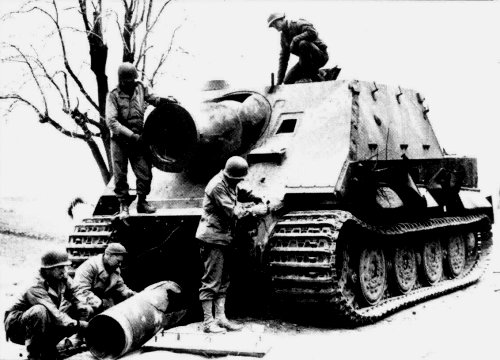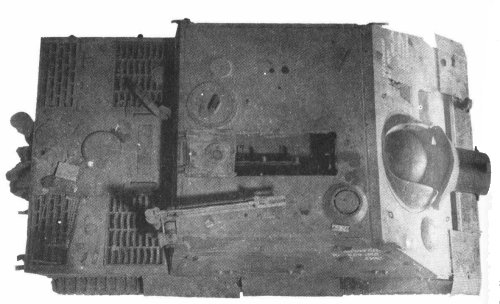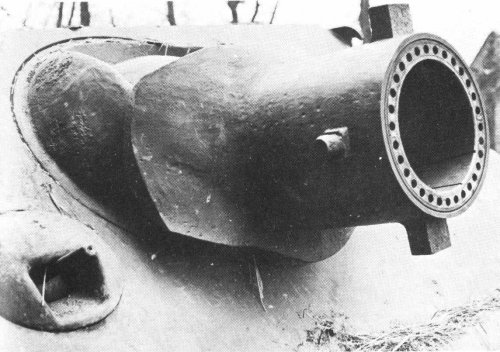Panzermörser Sturmtiger

|
Like the
Brummbär assault gun, the Panzermörser Sturmtiger (Armored
Rocket Launcher "Assault Tiger") had its origins in the ruins of
Stalingrad. Also known as Sturmmörser or Sturmpanzer VI,
the Sturmtiger was in many ways a beefed-up version of the
Brummbär. A prototype was first completed in October 1943, and the
Sturmtiger was to eliminate house-to-house combat using firepower to
flatten all buildings or bunkers with enemy soldiers. Heavily armored
and equipped with a rocket projector to launch naval depth charges, the
Sturmtiger would have been an awe-inspiring weapon capable of
dominating any urban battlefield. Unfortunately for Germany, production
did not begin until August 1944, when city sieges had long ceased to be
a priority of the Wehrmacht. Instead, the Sturmtiger were thrown into
desperate defensive field operations in Germany and Italy where their
massive armament was of limited advantage, though no vehicle could
afford to be struck by a Sturmtiger's depth charge (which after all was
designed for use against submarines). Eventually most were disabled in
combat or left behind when petroleum was ran out. Only 18 Sturmtiger
were produced, by converting
Tiger tanks. The Sturmtiger was built with a huge box-like superstructure on a Tiger chassis. The 150mm-thick frontal armor was virtually impenetrable to enemy fire, while side armor ranged between 80 and 85mm. Zimmerit anti-magnetic paste was also applied on the hull. Main armament was the 380mm L/5.4 Raketenwerfer 61 rocket launcher on the front plate, originally developed by the navy in 1943 for U-boats to fire high-explosive depth charges at land targets up to 5,650m away. On the Sturmtiger the launcher was specially built with a curved baffle plate to channel the rocket's blast and gases through holes around the muzzle ring to protect the crew and lessen the recoil - similar to a jet engine's reverse thrust. Secondary armament was a machine gun for close defense. Seven crewmembers manned a Sturmtiger: commander, fire observer, driver and four loaders for the 12 projectiles (plus one loaded in the breech). Behind the superstructure there was a small crane jib to load the rocket projectiles, each weighing over 345kg, into the fighting compartment through a hatch either on the roof or in the rear. Like all vehicles with the Tiger chassis, all Sturmtiger had a set of wide ground track and a narrow one for rail transport. |








